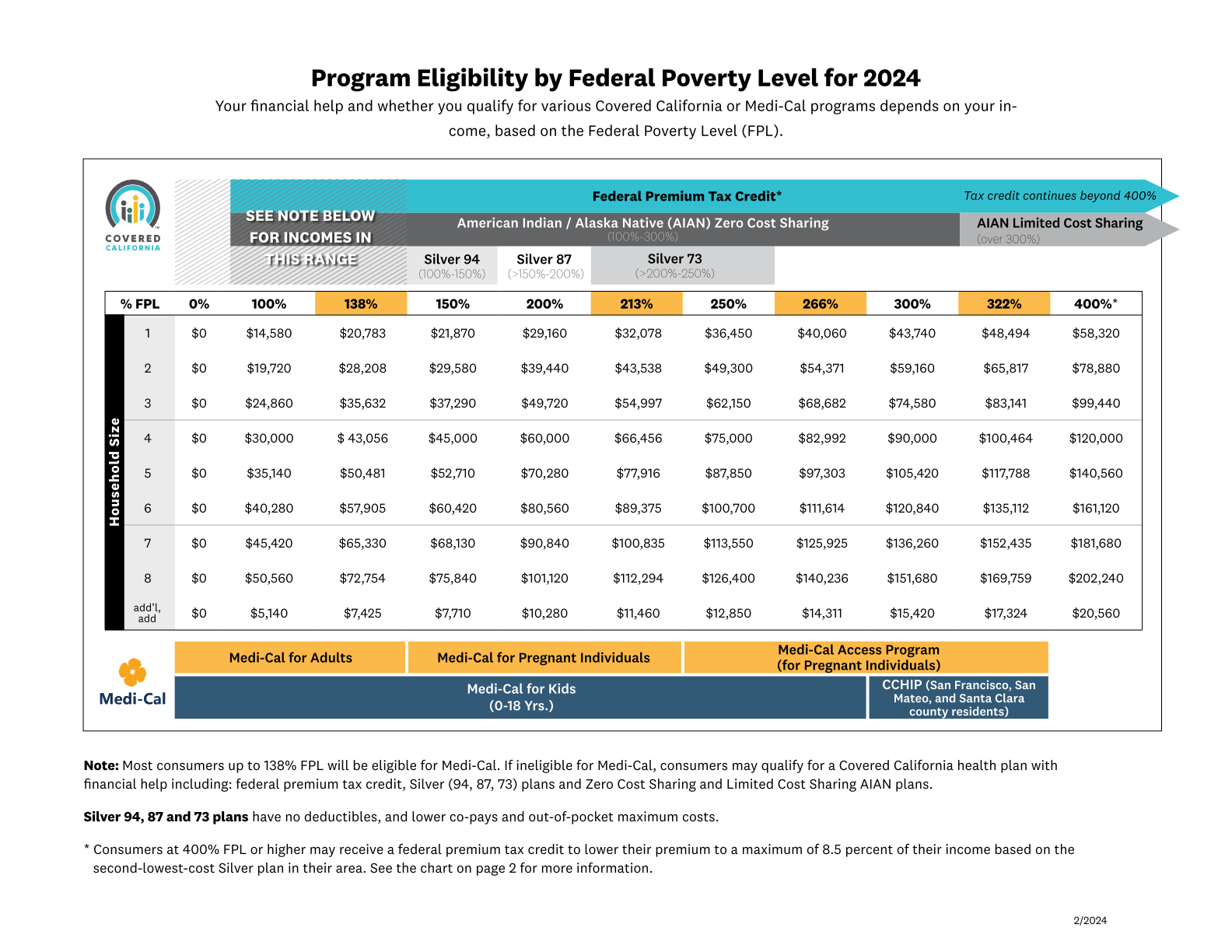Who can get a health plan through Covered California?
Residents of California who are unable to access affordable coverage have the option to obtain a health plan thru Covered California.
In addition, most immigrants qualify for health coverage, including the following groups:
- Lawful permanent residents (green card holders).
- Lawful temporary residents.
- Persons fleeing persecution, including refugees and asylees.
- Other humanitarian immigrants, including those granted temporary protected status.
- Non-immigrant status holders (including worker visas and student visas).
Covered California accepts applications from individuals who are lawfully present as well as those who are not lawfully present. These individuals can determine their eligibility for a health plan through Covered California or Medi-Cal without any waiting period or five-year bar. It is important to note that individuals who are not lawfully present do not meet the requirements for a health plan through Covered California. However, they may still be eligible for coverage through Medi-Cal.

Program Eligibility by Federal Poverty Level for 2024
Your financial help and whether you qualify for various Covered California or Medi-Cal programs depends on your income, based on the Federal Poverty Level (FPL)

Determining Your Eligibility
The criteria for qualifying for various health insurance choices via Covered California is primarily determined by these income standards. These standards consider the size of your household and the total income of all household members. This data is essential in determining the insurance plans you qualify for and the type of financial aid you may be entitled to in order to reduce the expenses of your premiums and out-of-pocket costs.
Please note that individuals or families with incomes at or below 138% of the Federal Poverty Level (FPL) may qualify for Medi-Cal. In case they are not eligible for Medi-Cal, they may be able to qualify for a Covered California health plan with financial assistance. This assistance includes options such as federal premium tax credits, Silver plans with coverage levels of 94, 87, or 73, as well as plans that offer Zero Cost Sharing and limited Cost Sharing AIAN Plans.
The Silver 94, 87, and 73 plans do not require deductibles and have lower co-pays and out-of-pocket maximum costs.
For individuals or families with incomes at or above 400% of the Federal Poverty Level, there is a possibility of benefiting from a federal tax credit. This credit ensures that their health insurance premium is capped at a maximum of 8.5% of their income. The calculation for this credit is based on the pricing of the second-lowest-cost Silver Plan available in their area.
 Mario Arce
Mario Arce
I have been working with Medicare clients since 2016. I serve California members in San Bernardino & Riverside county.


